I'm going to make you happy.
In fact, there is a way in which your organization automatically generate leads.
Targeted leads, that is.
But not only that: with this way you also build your authority as an organization.
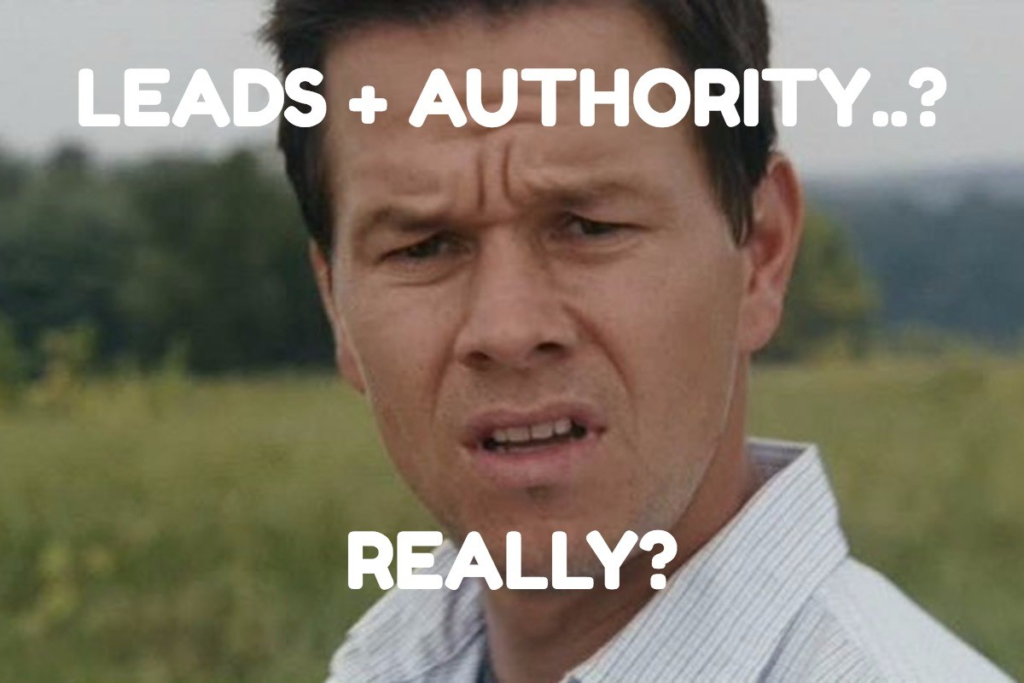
Last month, we ran a targeting campaign at SearchUser that has now collected 150+ leads through social advertising (specifically LinkedIn).
In the following case study, I explain to you step by step how we did this so you can implement it for your organization as well.
*Ga time? Click here and download the case study as a PDF
For this campaign, we certainly didn't reinvent the wheel.
What we did do was write a very specific PDF, which specifically addresses the needs and interests of a specific target audience.
It is precisely this "giveaway" that can ensure that you receive an ongoing stream of leads through online advertising.
Before I discuss the campaign, let me explain to you the three basic elements of all our campaigns. These three elements are the core, and also serve as tips for your marketing activities:
A targeted giveaway provides a huge conversion increase, compared to a general giveaway.
For us, this giveaway was the PDF: "The Future of Marketing for Training Agencies.
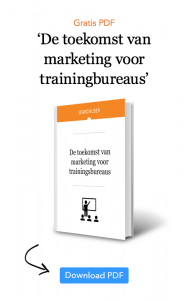
Make sure everyone who downloads this PDF receives an email follow-up that brings them closer to the sale. Think targeted case studies, articles, etc.
With marketing automation, you keep track of Which pages the lead visits on your website (and where they come from). That way you know what each lead's interest is.
Anyone who has visited our new website will see that we have developed a number of target pages, with specific e-books. For example, for finance organizations, or brokers.
Now if you're thinking: I'm never going to find the time to write that many e-books, I believe you.
After all, we don't have that time either.
'But then how did you write so many e-books?'
Very simple: 80% of the content of these e-books is the same.
What we did is that we wrote a general e-book, "The Future of Marketing for B2B Organizations. We then slightly adapted this e-book to different audiences such as training agencies, finance organizations, real estate agents, etc.
The beauty of this tactic is that you write 1 PDF, which you can use multiple times to collect leads.
Super effective.
*Action for you: write an e-book that you can use for multiple audiences.
We then approached our target audience via LinkedIn.
Notable here was the difference in effectiveness between the display + text ads and the sponsored content.
For those of you new to LinkedIn ads, these are the display + text ads:
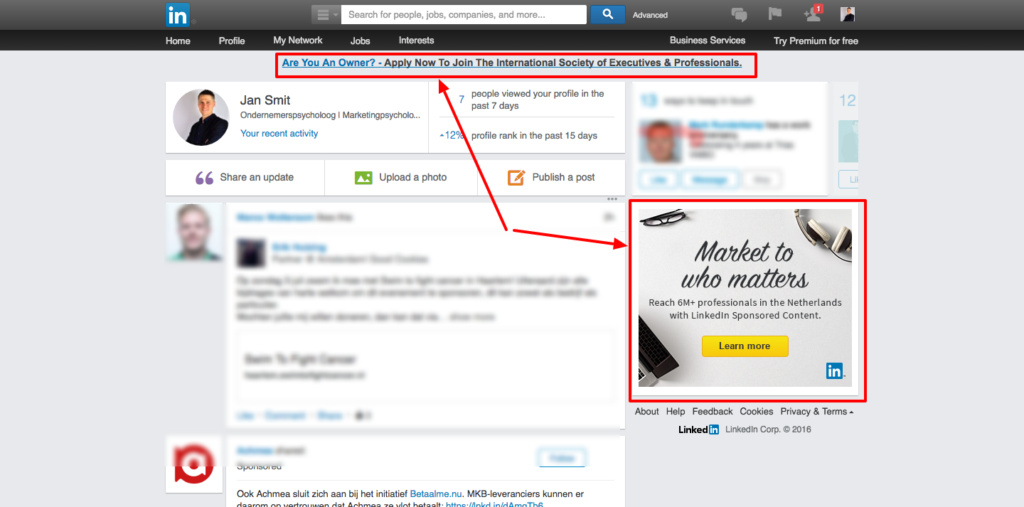
And these are the sponsored updates:
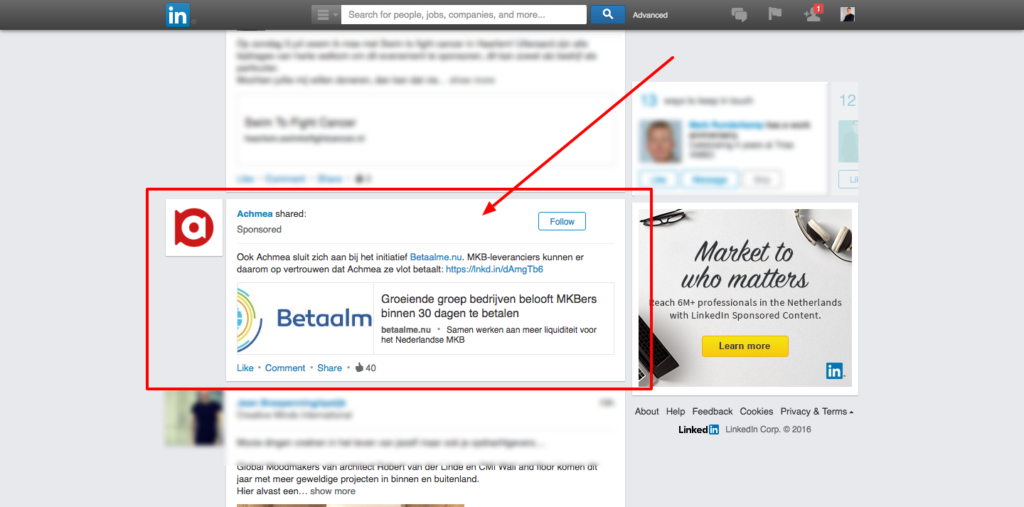
For our PDF ad, the sponsored content performed 140% better than the display + text ads.
This is something we see more often with clients - that sponsored content performs better.
My assumption about this is that the audience is used to clicking through an article, rather than an ad. Once your sponsored update has the "look + feel" of a regular shared article, people are more likely to click through. This is exactly what we did:
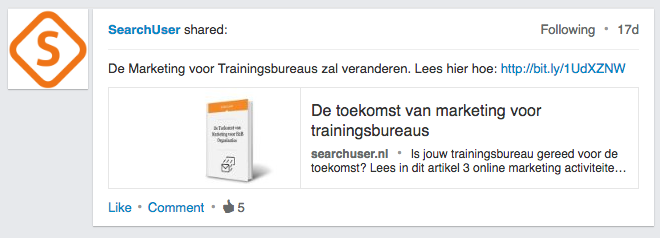
I can't stress enough how effective designing a specific giveaway is. But the conversion rates of this campaign make that very clear.
With our particular giveaway, the average conversion rate of all our PDF landing pages was 45%....
This is huge compared to the average landing page conversion rate. See a table of averages by industry here (Wordstream 2014):
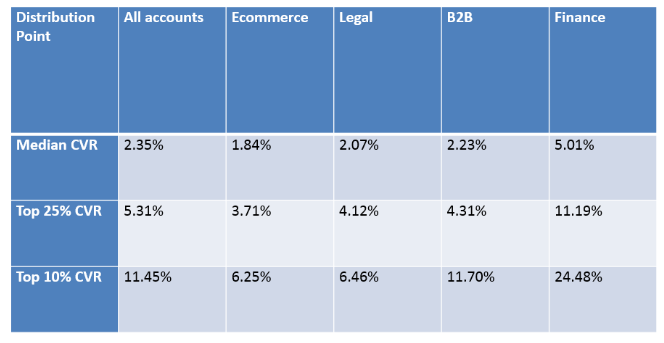
This step gave us the most insights.
Instead of 1 automatic follow-up, we tested 2:
TEST 1: Two emails with a direct invitation to a free consultation (where the second one was a reminder). This is a fairly direct way of email marketing, which gets varying results with our clients. However, there are many industries where the prospect is used to direct telephone contact. Personally, I always like to have tested this one, because it can get results very quickly, since you will be speaking to the prospect by phone.
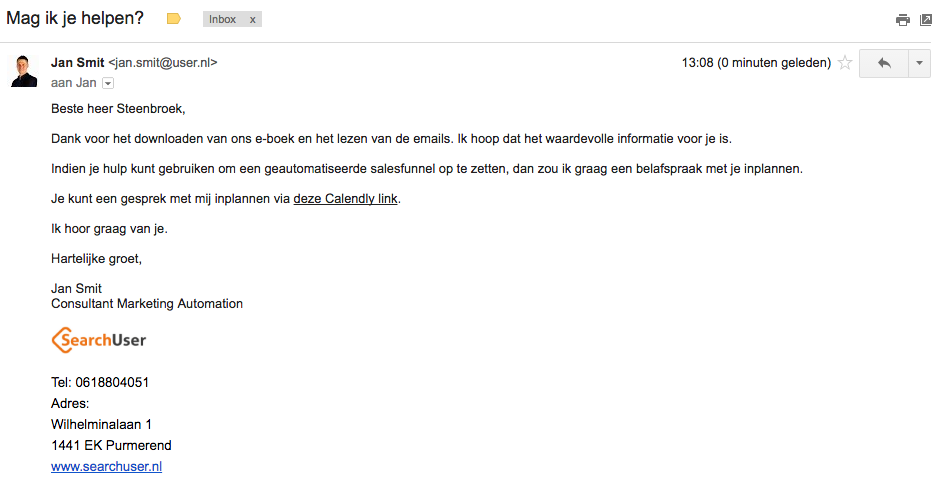
TEST 2: Three emails, with the lead receiving marketing tips, specifically targeting training agencies. Of course, this series also ended with a direct invitation.

Result: for both follow-ups, the conversion rate to a consultation was low.
However, since we also followed up the "warm" leads (see next step) by phone ourselves, we saw a clear difference between direct follow-up and follow-up where we added additional value.
More on this in the next step.
We decided to follow up the "hot" leads by phone.
This is very easy to set up with marketing automation: in fact, you compile a lead list based on their email and website behavior.
We compiled the list of warm leads using the following criteria:
- The lead opened the PDF
- The lead has opened at least 1 email
- The lead has visited SearchUser's website at least 2 times
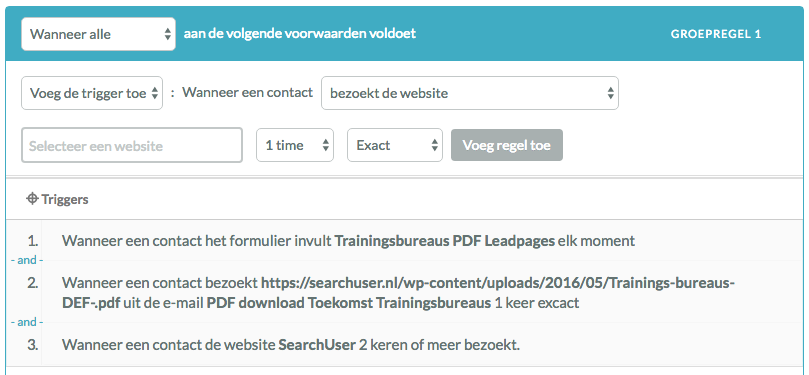
Here we saw a significant difference between the leads that had had a short follow-up (with 1 email) and a long one (with 4 emails). The latter gave us 75% more appointments than the direct invitation email.
This confirms what we already expected: that sending a lot of value has a positive impact on the potential customer's willingness to meet.
It initially provides confidence. If your emails are valuable to the potential customer, it creates trust in your knowledge and expertise.
In addition, there is already a recognition. Every lead who had already received some emails approached my phone call as expected. It was no longer a 'cold' call at all. After all, they had already experienced my face and 'tone of voice'. In short: I was already familiar to them!
*Action for you: automate your email follow-up and then measure what they do on your website.
-> Design a giveaway written for a specific target audience. If you can, make sure you can reuse this giveaway for other audiences!
-> Test multiple advertising channels where your target audience can be found. That way, you will know where to focus your next campaign.
-> Automate your follow-ups. Provide multiple follow-ups so you know what works for your target audience.
-> Follow up by phone with leads who have taken multiple actions.
-> The next campaign we will also invite leads to a webinar.
-> Also, we will ask for more information during the email follow-up (so we can better segment the leads).
-> We will share more specific blog articles through our emails, measuring exactly where the lead's interest lies.
Of course, I will also share with you the next campaign details.
Contact us here!
